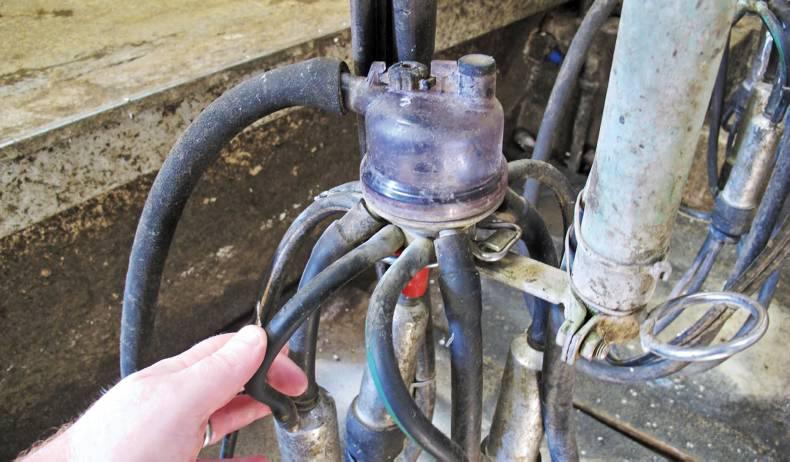Milk is an excellent growth medium for bacteria and unless the machine washing routine is correct you can increase the rate of bacteria growth.
Bacteria live in soil, silage, faeces, skin, etc, and with inadequate cleaning, deposits build up on milking machine surfaces. The best farmers achieve thermoduric counts less than 200/ml and total bacteria counts (TBC) less than 20 on a regular basis. Results greater than both these figures often indicate the wash routine is inadequate.
Why do milk processors measure bacteria in milk? Contamination of milk with thermoduric bacteria can cause processing problems for the dairy Industry such as reduced prices for product, and can potentially reduce shelf life.
Research has also shown the less preparation you do with cows prior to milking, the higher the TBC and thermoduric bacteria will be.
Those that complete a good pre-milking routine have lower bacteria counts.
Residues that might occur in milking machines include organic residues like fats, proteins, etc, mineral deposits (mainly from water), for example calcium, iron, etc, and bacterial films and chemical residues, eg lubricants, teat dips, etc.
Two recommended cleaning methods for milking machines are: Cold circulation cleaning using caustic detergents or hot circulation cleaning. Hot washing using alkaline/chlorine detergent/sterilisers is the most popular in Ireland.
Your six-step routine should be: (1) After milking wash jetters and outside of clusters, remove the milk filter. (2) Every parlour should be rinsed (14 litres/unit) with the objective to remove any milk left in the line and other deposits. (3) Next, include liquid alkaline chlorine detergent-steriliser in hot water (70 to 80 degrees) at nine litres of water per/unit.
(4) Circulate this for 10 minutes and retain if recommended for the second daily wash. (5) After the detergent wash, you need to rinse immediately with 14 litres per unit of cold water. (6) Finally, ensure the parlour is drained before milking and use a weekly acid wash if known hard water in the area.
1. Deposit build-up on pipe – With inadequate cleaning, contamination will build up in the form of a biofilm formation on pipelines. This can increase bacteria levels in milk.
2. Rubberware – As it gets older, rubber starts to pit and crack, allowing bacteria to live in the cracks, protected from hot water and chemicals. Exposure of rubber to chlorine for long periods will cause rubber to deteriorate more quickly and hence the importance of using cleaning products the correct way.
3. Chemicals – Use regulated cleaning products with clear usage rates and manufacturer details. Handling chemicals can be very dangerous so be careful and have containers stored properly in a place they can be locked away.
4. Measure everything – Measure the correct level of chemical and ensure you have the correct water quantity for washing and rinsing. Inadequate volume of rinse water is one of the main reasons why Trichloromethane (TCM) levels may be high.
